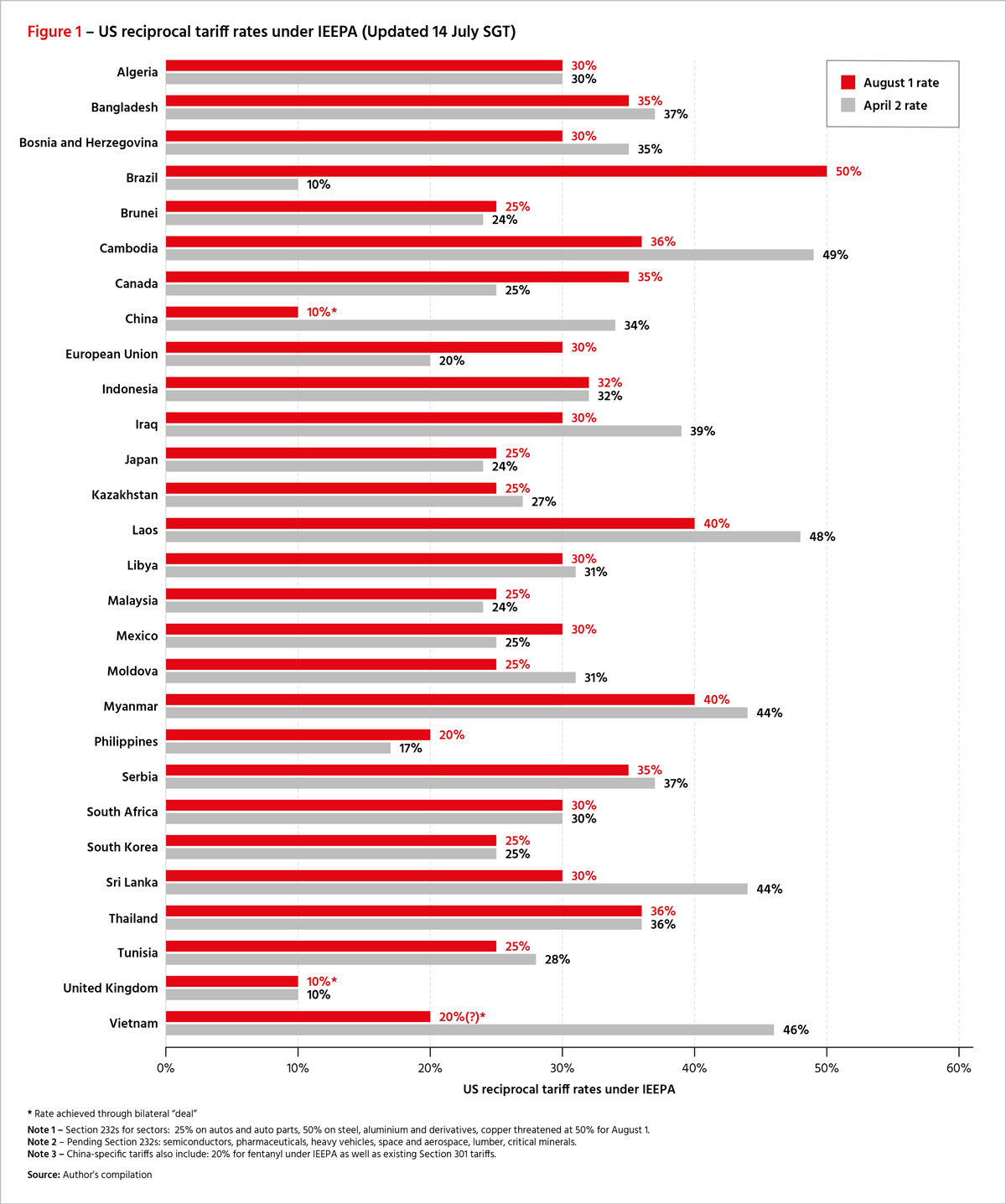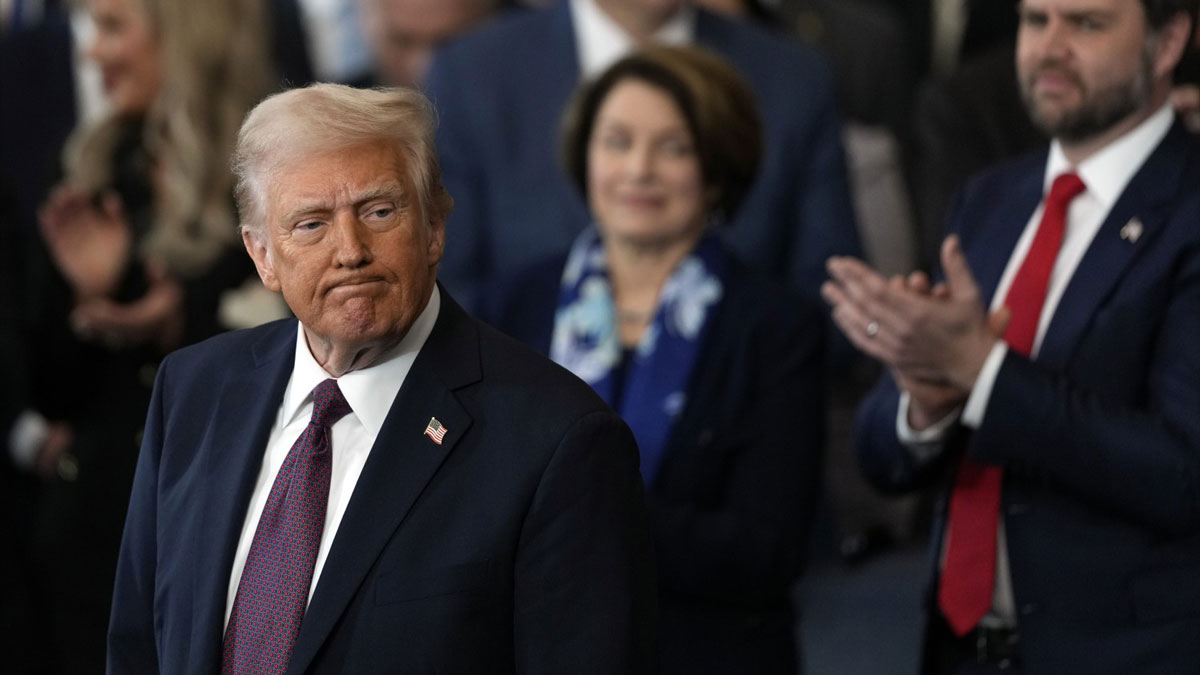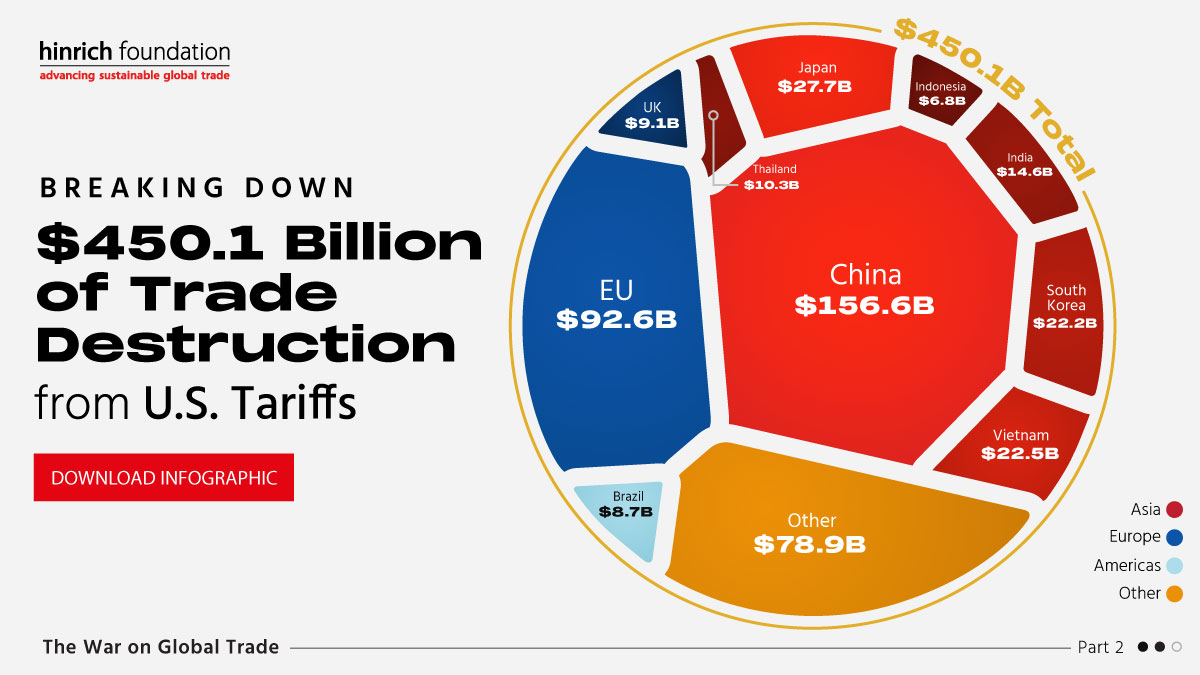Published 15 July 2025
In Round 2 of Liberation Day, Donald Trump sent letters to more than 25 government leaders via social media between 7 and 14 July, dictating US terms of trade that he described as “deals” reached on new tariff rates effective 1 August. Just about the only thing that is clear is that the tariff roller coaster will continue.
Last week, President Donald Trump made a second attempt to deliver on his 2 April “Liberation Day” promises of higher tariffs for foreign imports to the United States. The original tariff implementation had been largely postponed for 90 days, i.e., around 9 July, largely due to an unforeseen US bond market reaction to Liberation Day that forced the President to extend the deadline. That extension also allowed time for the US to get negotiated deals into place with all its trade partners around the world. Expectations were high, at least within Trump’s team, that either countries would get agreements over the line, at least within Trump’s team, or that the timelines for the negotiations would be lengthened.
However, as the original tariff extension deadline expired by mid-July, neither solution happened, leading to prolonged uncertainty ahead about US trade policy and tariff rates for trade partners.
Rather than holding another event in the Rose Garden, as he did on 2 April, Trump released a series of letters directed to government leaders via his favored social media platform starting on 7 July. These letters dictating US terms of trade, Trump said, represented “deals” reached on new tariff rates to be applied on 1 August.
By the end of the week, more than 25 documents were released. Most had identical wording, except for the figures slotted in for the tariff rate specific to each of its recipient countries. These were eye-wateringly high, with figures ranging from 20% to 50% as shown in Table 1 below.
 Table 1: Reciprocal tariff rates
Table 1: Reciprocal tariff rates
There was no justification given for the rates assessed via the letters. Unlike the original “reciprocal” tariff figures, which were based on a controversially simple formula, the revised tariff rates this time did not appear to reflect any specific rationale.3
Governments that invested heavily in negotiations largely got reductions from 2 April levels which were neither larger nor much smaller than those given to countries which were not invited to regular meetings across the three-month negotiating period.
South Korea, for example, still had a 25% rate, even with an existing Free Trade Agreement (FTA) with the US in place and considerable effort spent in Washington on negotiating. The European Union received a new rate of 30% which is 10% higher than the number given in April. Malaysia had another 1% added. Laos was dropped to 40% from 48% without apparently having offered the US any concessions at all.
As the letter templates were nearly identical, the only apparent justification for new tariff rates was the vaguely worded sentence which read, verbatim: “We have had years to discuss our Trading Relationship with [insert country name here], and have concluded that we must move away from these long-term and very persistent, Trade Deficits engendered by [country name’s] Tariff, and Non Tariff, Policies and Trade Barriers.”
Letters also mentioned that any attempt at retaliation would be met by matching actions by the US, in addition to whatever tariff rate had been assigned via the letters. Each letter also included the sentence that “Goods transshipped to evade a higher Tariff will be subject to that higher Tariff.”
Three letters, however, were different. Mexico’s had a reference to fentanyl. Trump wrote “Mexico has been helping me security the border, BUT, what Mexico has done, is not enough.”
The European Union letter contained the following sentence: “The European Union will allow complete, open Market Access to the United States, with no Tariff being charged to us, in an attempt to reduce the large Trade Deficit.”
The letter to Brazil was most striking.4 Brazil originally was given a 10% rate, as it runs a trade surplus in goods with the United States. However, Trump’s letter threatened tariffs of 50% on 1 August. The text was very different in tone, focusing heavily on ongoing criminal charges against former Brazilian President Jair Bolsonaro, a Trump ally, over Bolsonaro’s role in allegedly staging a coup against Brazil’s incumbent leader.
The Brazil threat was especially surprising given that all “Liberation Day” tariffs were justified under the International Economic Emergency Powers Act (IEEPA). Two lower courts have already found the Executive Branch use of trade deficits as an insufficient rationale for the determination of an economic emergency and have also ruled against the use of tariffs as an appropriate remedy. An appeals court will hold another round of hearings on 31 July.
If the original justification of trade deficits was viewed by two courts as insufficient reason for imposing tariffs, it is highly likely that courts will take a similarly dim view of the Brazil letter, which seeks to impose tariffs for reasons that stray far beyond economic concerns and do not pose a threat to US economic security.
Partly, perhaps, to account for the high likelihood that Trump’s 50% tariff threat to Brazil will be overturned, the letter also threatened to launch a Section 301 case against Brazil alleging its unfair trade practices against the US. This is the first time Trump has suggesting using Section 301 against a trade partner this year.5
The only partner to emerge from this process, so far, with changes to sector-specific rates is the United Kingdom. In its agreement, the UK and US exchanged commitments on beef, automobiles, aerospace, steel, and aluminum.6
No other partner has been given reductions or exemptions from ongoing Section 232 national security tariffs imposed for autos, auto parts, steel, aluminum, and items made with these metals. Ongoing Section 232 investigations for other products including copper, lumber, semiconductors, and pharmaceuticals have not been addressed in the letters.
Two countries, China and Vietnam, which had been assessed tariffs above the 10% baseline on 2 April, did not receive letters last week.
After a series of negotiating sessions in Geneva and London, the US and China agreed to dial back tariffs from 125% to 10% on a temporary basis.7 (Note, however, that China is still subject to an additional 20% tariff over allegations of facilitating fentanyl imports into the US.) The timeline for reaching a more complete agreement with China was adjusted to mid-August.
Trump announced an agreement with Vietnam via social media on 2 July.8 Trump said that Vietnam would receive a base tariff of 20%, rising to 40% in cases of “transshipment.” In exchange, Trump claimed the US would receive duty-free rates for all US exports to Vietnam. In the days since, however, no additional details have emerged from either government. New reports have indicated disagreements on the exact terms of what may have been negotiated and declared as an agreement by Trump.9
The United States is currently collecting 10% tariffs from all foreign imports. Those trade partners that have not yet received a letter from the White House are anticipating the continuation of the 10% rate for their goods sent to the US.
Every letter contains a new deadline for implementation of the higher tariff application starting on 1 August. Trump has indicated that he remains open to reaching different arrangements prior to that date, effectively meaning an extension of the original extension to a new deadline, although he has also insisted that he will not accept any further delays beyond this point.10
Markets buckled, though they didn’t fall dramatically, to Trump’s latest “reciprocal” tariffs. Long-term Treasury yields began to edge up again a day after Trump’s first letter went out. Stocks are down in key markets. Still, markets appear to expect Trump to pull back once more.11 The extension of the deadline from 9 July to 1 August has also provided a small window of extra time for some talks to wrap up.
At this point, just about the only thing that is clear is that the tariff roller coaster will continue. Only six months ago, US tariff rates were just above 2%. In the wake of Trump’s latest letters, nothing is clear except that the overall tariff average on goods sent to the US is set to rise dramatically.
***
[1] https://www.hinrichfoundation.com/research/article/trade-distortion-and-protectionism/impact-of-trump-reciprocal-tariffs/
[2] See, for example, the letter issued to South Korea shown in https://m-en.yna.co.kr/view/AEN20250708001151315?section=news
[3] The White House fact sheet released at the same time did not provide much in the way of clarification either. See https://www.whitehouse.gov/fact-sheets/2025/07/fact-sheet-president-donald-j-trump-continues-enforcement-of-reciprocal-tariffs-and-announces-new-tariff-rates/
[4] Trump’s letter to Brazil was reproduced in https://www.scmp.com/news/china/article/3317774/brazil-works-develop-response-trump-tariff-hike
[5] https://www.hinrichfoundation.com/research/article/trade-distortion-and-protectionism/trump-wide-menu-of-legal-options-in-the-tariff-war/
[6] See the details on the UK-US Economic Prosperity Deal (EPD) at https://www.gov.uk/government/publications/us-uk-economic-prosperity-deal-epd The reciprocal tariff rate for the UK on April 2 of 10% remained unchanged after the EPD.
[7] https://www.whitehouse.gov/presidential-actions/2025/05/modifying-reciprocal-tariff-rates-to-reflect-discussions-with-the-peoples-republic-of-china/
[8] https://www.reuters.com/world/asia-pacific/trump-says-he-has-struck-trade-deal-with-vietnam-2025-07-02/
[9] See, for example, https://www.politico.com/news/2025/07/10/vietnam-trump-tariff-deal-00447715
[10] https://www.nbcnews.com/business/business-news/trump-threatens-no-extensions-aug-1-tariff-deadline-what-countries-rcna217536
[11] https://www.washingtonpost.com/business/2025/07/12/stock-market-trump-tariffs-trade/
© The Hinrich Foundation. See our website Terms and conditions for our copyright and reprint policy. All statements of fact and the views, conclusions and recommendations expressed in this publication are the sole responsibility of the author(s).





